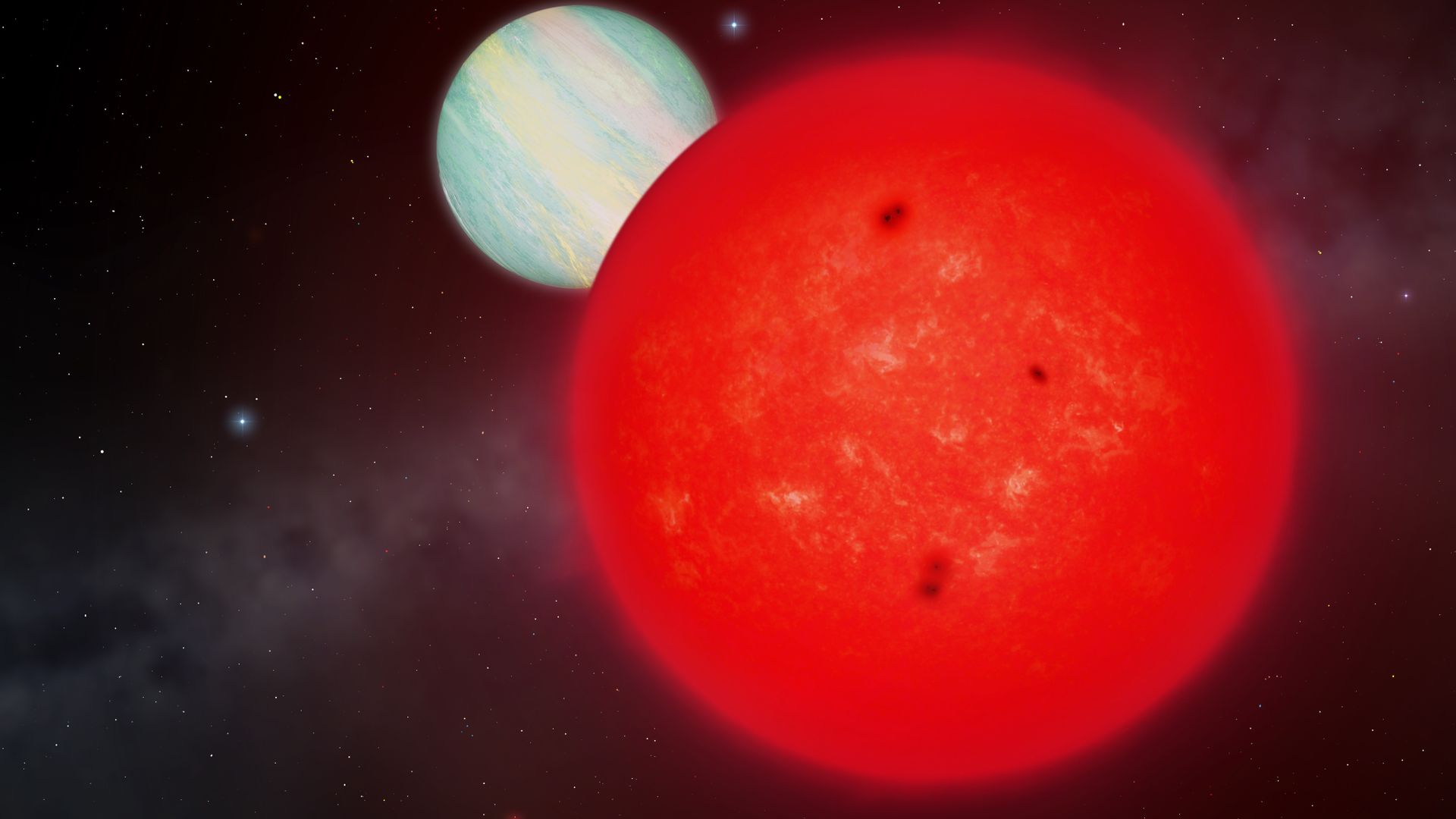🔭 How can such a large planet orbit such a small star?
Follow us on Google News (click on ☆)
Gas giants like Jupiter are common around Sun-like stars but extremely rare around red dwarfs. These less massive stars have less material in their protoplanetary disks, theoretically limiting the formation of large planets. Yet, TOI-6894b, a planet larger than Saturn, orbits a red dwarf twenty times less massive than the Sun.

Artist's impression of the red dwarf TOI-6894 and its orbiting gas giant.
Credit: University of Warwick/Mark Garlick
Edward Bryant's team at the University of Warwick identified TOI-6894b using NASA's TESS satellite. Follow-up observations with the ESPRESSO and SPIRou spectrographs confirmed its mass and size. This discovery, published in Nature Astronomy, raises questions about planetary formation mechanisms.
Two main theories attempt to explain gas giant formation: core accretion and disk instability. The first assumes a solid core forms and then attracts gas, while the second involves direct collapse of the protoplanetary disk. Neither seems to fully explain TOI-6894b's presence around such a low-mass star.
TOI-6894b orbits very close to its star, completing a revolution in 3.37 days. Despite this proximity, its atmospheric temperature remains moderate, around 297°F (147°C), due to the red dwarf's low heat output. This makes it an ideal target for studying exoplanetary atmospheric chemistry.
The James Webb Space Telescope may soon unravel the mystery of TOI-6894b. A proposal to observe its atmosphere has been accepted, aiming to detect molecules like methane or ammonia. This data could reveal whether the planet formed via core accretion or disk instability.
Red dwarfs make up 75% of the Milky Way's stars. Even if only 1.5% of them host gas giants—a scientist's estimate—that could mean millions of planets similar to TOI-6894b. This discovery opens new perspectives in the search for extrasolar worlds.
Why are red dwarfs so interesting for exoplanet research?
Red dwarfs are the most numerous stars in the galaxy, offering a vast field for exoplanet studies. Their low luminosity makes detecting transiting planets like TOI-6894b easier.
These stars have long lifespans, allowing life to develop over immense timescales. In fact, no red dwarf is estimated to have reached the end of its life since the Big Bang. However, their intense magnetic activity may make surrounding planets less habitable.
The discovery of gas giants around red dwarfs expands our understanding of planetary diversity. It shows massive planets can form in environments previously considered unfavorable.
Red dwarfs will remain a prime target for telescopes like James Webb, which can study their planets and atmospheres in detail.